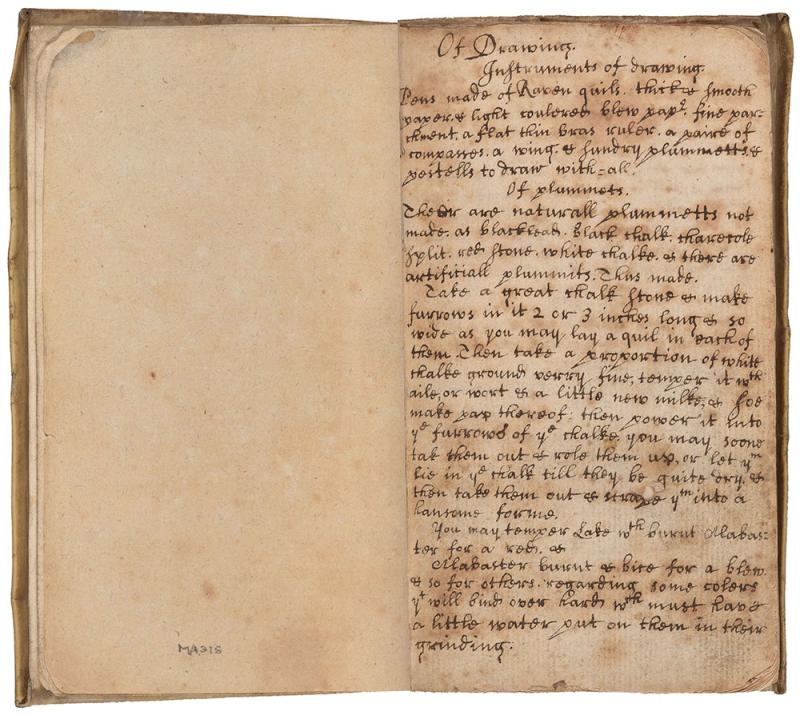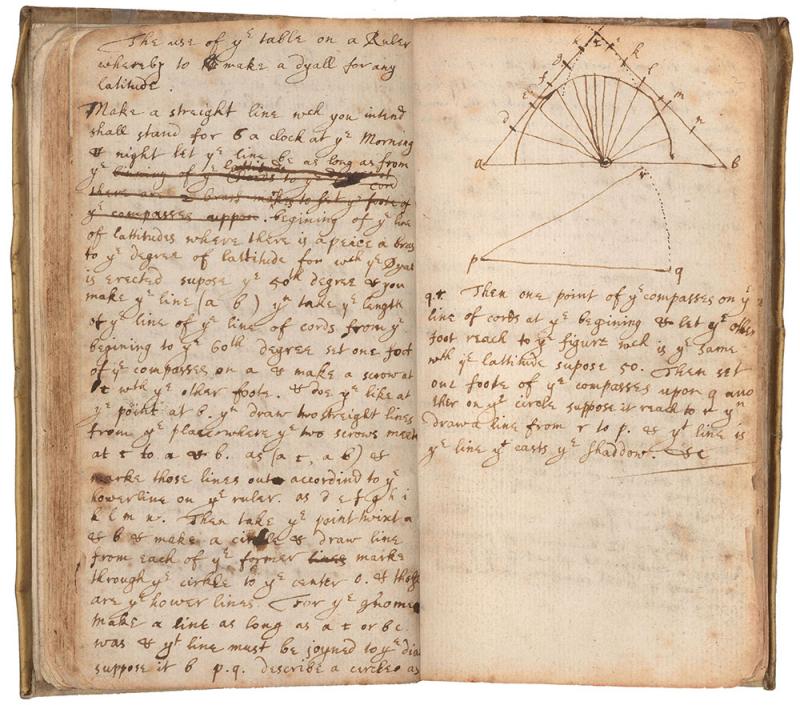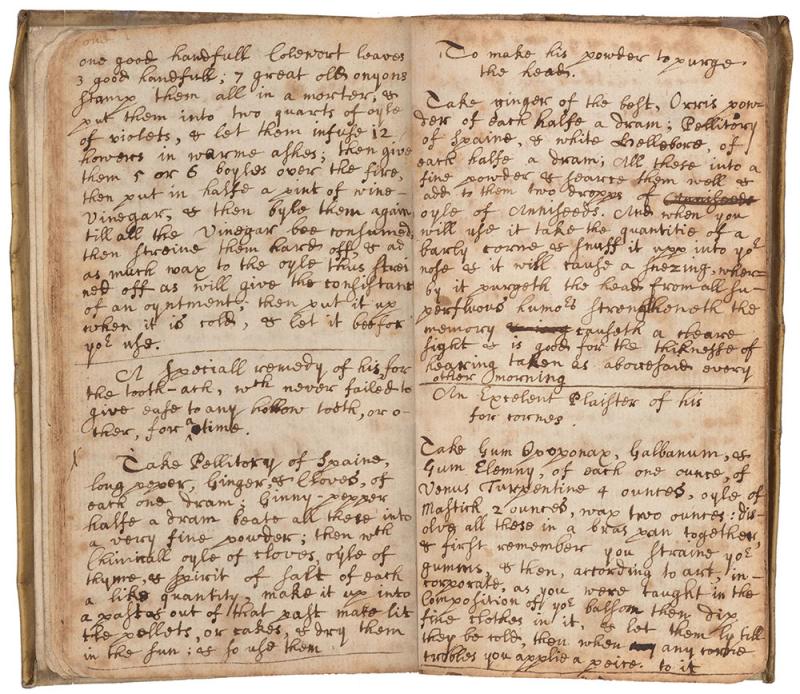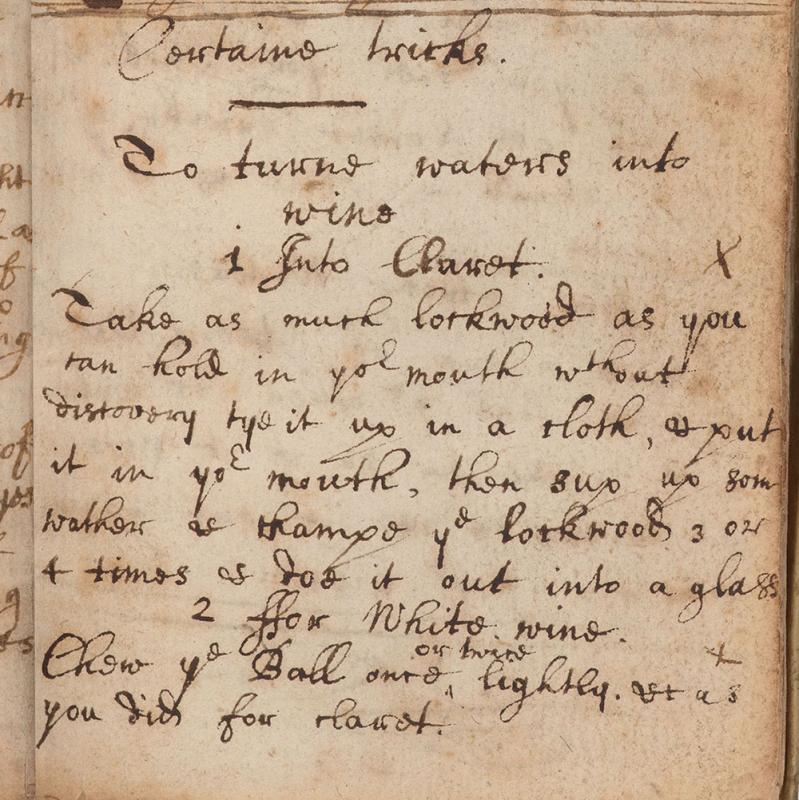The Morgan’s earliest acquisition related to the history of science came in 1907, when J. Pierpont Morgan purchased a small notebook kept by Sir Isaac Newton (1642–1727) during his late teenage years. As one of four surviving notebooks that document Newton’s early schooling in Lincolnshire and university education at Trinity College, Cambridge, the pocket memorandum book affords considerable insight into the reading practices and intellectual preoccupations of Newton before he made his significant mathematical and scientific discoveries.
Newton took notes in this volume during two distinct phases, conveniently marked by a change in handwriting: the first from roughly 1659–1661, when he was living in Woolsthorpe and Grantham, Lincolnshire, as well as his first year at Trinity College, Cambridge; the second from roughly 1662–64, also at Cambridge. As described in my introduction to the digital facsimile, Newton adapted much of the notebook’s early content from two printed sources: John Bate’s The Mysteries of Nature and Art (1635) and Francis Gregory’s Nomenclatura brevis anglo-Latinis (1654). Much of the content from the second phase, on the other hand, cannot be traced to specific books and instead appears to reflect Newton’s mathematical and astronomical self-education during his first years at Trinity.
But not all of the book’s early notes derive from Newton’s reading. Several medicinal recipes—including “a speciall remedy … for the tooth-ach” and a “powder to purge the head”—are attributed to Vincent Lancelles, a Venetian mountebank who traveled around Britain in the 1650s. It may be that Lancelles visited Lincolnshire, or even Cambridge, and met Newton (or Newton may have learned of these recipes from acquaintances or fellow students).
Of the notes that cannot be traced to Newton’s reading, perhaps the strangest are listed under the heading “Certaine tricks.” The majority of these are conjuring tricks “to turne waters into wine” and involve a substance listed as “lockwood,” or logwood, which is a dye made from the heartwood of a South American tree. Here is the first recipe, for turning water “into Claret,” or a light red wine:
Take as much lockwood as you
can hold in yor mouth wthout
discovery tye it up in a cloth, & put
it in yor mouth, then sup up som
wather & champe ye lockwood 3 or
4 times & doe it out into a glass.
Here the logwood, once “champed” inside of a cloth ball hidden in one’s mouth, apparently lends a reddish color to the “supped” water, which the trickster then spits back into the glass. For “white wine,” one follows the same process but chews the concealed logwood “once or twice lightly.” The recipes go on to list additional means of alcoholic transmogrification. For the sweet wine known as sack, follow the instructions as for claret but add a “drop of Wine or beare [beer] vinegar” to the glass and shake. For “posset drink” (OED: “A drink made from hot milk curdled with ale, wine, or other liquor, flavoured with sugar, herbs, spices, etc.”), add “Sallet oyle” and follow the sack recipe. For “Sky coloured Blew” wine, add salt and follow the claret recipe.
My personal favorite is the recipe for “strong waters” (i.e., spirits), which involves placing two glasses on the table, one with water and one with clear spirits. The recipe instructs one to “drinke up [the spirits] as if it was ye water & doe it out againe into one of ye Glasses.” It’s hard to believe this trick would fool even the dimmest of wits, and if the handwritten “x” marks placed next to these recipes are any indication of their efficacy, the absence of one next to “strong waters” seems telling.
The Morgan’s early pocket memorandum book certainly contains traces and glimmerings of the great scientific discoveries that lay ahead for Newton. The attention paid to colored paints and printing inks, for instance, seems to anticipate the important study of color and the heterogeneity of light begun by Newton in 1666 and culminating in his Opticks (1704). But the notebook is equally interesting for the ways it documents the sheer breadth of Newton’s curiosity about the natural world and its operations. Some of these notes, like the logwood recipes evidently meant for a laugh, reveal a young man experimenting with chemical combinations as much for amusement as edification.





